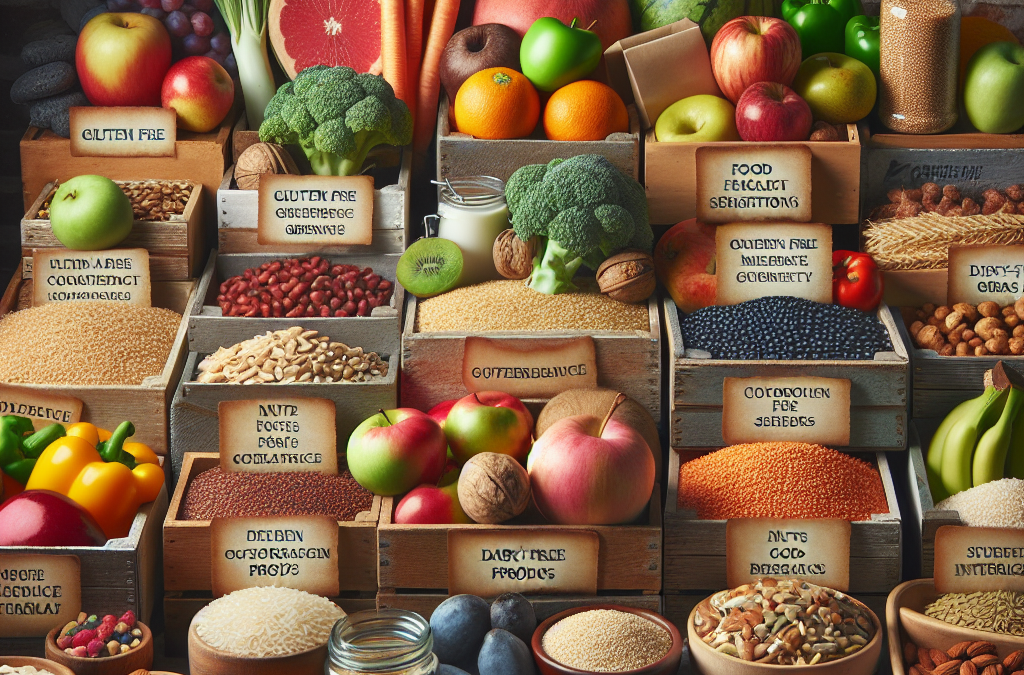Hey there! I want to share my personal journey with managing food sensitivities, an experience that many of us can relate to. It’s all about finding ways to nourish our bodies without triggering uncomfortable reactions. There’s no magic bullet, but I’ve found that focusing on whole foods has made a huge difference for me. Let’s break this down into five key areas that I believe are essential for managing food sensitivities effectively. Ready? Let’s dive in!
Understanding Food Sensitivities
What They Are
First off, let’s talk about what food sensitivities really mean. Essentially, they occur when your body reacts poorly to certain foods, but it’s not always about allergies. It can be frustrating because many folks experience gastrointestinal issues, headaches, or fatigue, and they often can’t pinpoint exactly what’s causing it.
In my own experience, it took a lot of trial and error to identify triggers. I found that common culprits include gluten, dairy, and specific additives. Understanding this was key for me in learning how to navigate my food choices.
So, it’s crucial to keep a food diary or use an app to track everything you eat and how it makes you feel. This method helped me connect the dots, and it can do the same for you!
Choosing Whole Foods
The Benefits
Now, let’s talk about why whole foods are my go-to. Whole foods are unprocessed and free of additives, which makes them a safer option for someone with food sensitivities. They also tend to be packed with nutrients that support overall health.
When I switched to whole foods, I noticed a significant drop in my sensitivity flare-ups. It’s like my body finally found some peace! Eating fruits, veggies, whole grains, and lean proteins became my new jam.
And the best part? Whole foods tend to have fewer allergens. Plus, there’s a wealth of options to explore, which makes grocery shopping feel like an adventure rather than a chore!
Reading Labels Mindfully
What to Look For
Okay, here’s where it gets a bit tricky. When you’re in the grocery store, reading labels is a must! I can’t stress this enough. Even products that seem safe can contain sneaky ingredients you wouldn’t expect.
Take the time to familiarize yourself with the terms used on food packaging. For example, certain preservatives or flavorings might not seem harmful at first glance but can cause reactions. I always look for items with simple ingredient lists—less is more!
Additionally, becoming aware of allergen warnings can save you a lot of trouble. If you see something like “may contain traces of nuts,” it’s probably best to steer clear if that’s a sensitivity of yours!
Meal Planning and Preparation
Staying Ahead of Cravings
Meal planning has been a lifesaver for me! By prepping my meals in advance, I avoid those last-minute choices that often lead to mistakes. I usually dedicate a few hours each week to planning and cooking.
Get an Amazing Discount on the Best Certified Organic Whole Food Supplement!
I like to take stock of what I have in my fridge and pantry before even thinking of new recipes. This helps prevent waste and keeps my meals interesting. I often batch-cook things like quinoa or roasted vegetables, so I have healthy options ready to go.
Plus, when you’re in control of your meals, you can experiment with different flavors and textures. It’s fun to get creative! Just keep in mind what works for your body.
Seeking Professional Guidance
When to Get Help
Sometimes, it feels like you’re in over your head, and that’s totally okay! Seeking help from a nutritionist or dietitian can provide you with personalized guidance tailored to your sensitivities.
I remember my first appointment; I felt like a weight had been lifted. They can help you create a balanced diet that ensures you’re getting all the nutrients you need while avoiding triggers.
Also, they can offer tips and tricks that you might not find online. It’s always good to have that professional support because let’s be real, we’re all a bit different when it comes to our bodies.
FAQ Section
1. What are the common signs of food sensitivities?
The common signs include bloating, gas, headaches, fatigue, and digestive issues. It’s important to note that symptoms can vary from person to person.
2. How can I identify my food sensitivities?
The best way is to keep a food diary to track what you eat and any symptoms that arise. This can help you pinpoint specific foods that may be problematic.
3. Why are whole foods better for managing food sensitivities?
Whole foods are less processed and typically have a shorter ingredient list, which reduces the risk of allergens and additives that can trigger sensitivities.
4. What should I focus on while grocery shopping?
Look for whole ingredients with minimal processing. Always read labels to check for any potential allergens and choose items with the fewest ingredients possible.
5. When should I see a professional about my food sensitivities?
If you’re feeling overwhelmed or confused about your food choices, it’s a great idea to consult a nutritionist or dietitian for tailored advice.
Thanks for stopping by! I hope these insights help you on your journey to navigating food sensitivities in a more manageable way. Remember, it’s all about finding what works for you!




